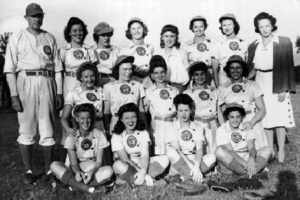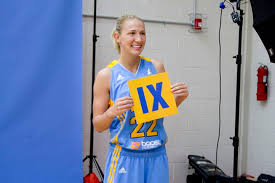The Significance of the Title IX Amendment

The Title IX amendment has opened doors for equality among both men and women in educational institutions and activities. Title IX is an influential part of the fight for equality, and organizations are now better equipped in responding to discrimination, violence, and harassment.

Title IX of the Education Amendments of 1972 has outlawed discrimination based on sex in any educational program or activity that is federally funded. A person of any sex must not be restricted from participation, or excluded from any benefit the program brings. Title IX also has an expansion covering sexual harassment and violence. Schools are legally required to respond and change adverse situations. They must address and publish an outline of the complaint, investigate and punish the party exhibiting sex discrimination, sexual harassment, and sexual violence in any program or activity tied to the school. Although the accused has to be directly enrolled or employed by the school, any location, event, circumstance or building owned or regulated by a student organization recognized as a tertiary institution where the sexual harassment ensues is eligible for the complaint. Schools are required to have a timely reaction to the discrimination and grant both parties equal rights during the investigation. They have to discuss unfair educational environments based on sex discrimination, sexual violence and harassment school-wide. Schools must also supply educational and awareness programs about sexual harassment or discrimination. Employees are to receive training addressing sexual violence complaints and the diagnosis of unjustifiable practice. They are obligated to inform authorities and know to what extent they must keep confidential from an incident, staff members must teach students about reporting, the option to request secrecy, counseling, or other support services, and the right they have to file Title IX complaints within the school that reports to campus or local law enforcement.

Prior to the Title IX amendment, women’s sports were restricted and had less participation than male sports. These sports were recreational and less competitive and the focus was more on exercising than having a fun competitive game. As the population of women participating in sports increased, they began to form intramural clubs for athletic purposes in the late 1800s and early 1900s. Their collegiate sports within institutions weren’t acknowledged, even though 70% of women’s sports were in these clubs by 1936. Then in the early 1900s, the Committee on Women’s Athletics and the American Physical Education Association supported programs and established an organization for women’s sports, called the Women’s Division-National-Amateur Athletic Federation, for intercollegiate competition.

The first example of women’s intercollegiate athletics was held at the University of California, Berkeley, Stanford, University of Washington, and Ellensburg Normal School, which held basketball games in 1896. Competition increased in the 1900s as women earned the right to vote through the women’s suffrage movement bringing the passage of the 19th Amendment in 1920. This was a driving force for women’s rights, catapulting feminist movements throughout the United States to action. When World War II began, the majority of men were deployed. Some women joined as well, but they also began forming athletic groups such as the All-American Girls Professional Baseball League in 1943 (replacing the well-known Major League Baseball that was shut down due to the war). By the end of World War II, college and scholastic competition expanded, allowing women’s sports to be practiced more and more. In came the Civil Rights Act of 1964, giving women and minorities more status, but the push for equal rights never withered until the 1970s, when women’s sports finally got a win.

Title IX of the Education Amendments of 1972 was enacted by Congress and signed into law by President Richard Nixon. Representative Patsy Mink was recognized as a major author and sponsor, and Representative Edith Green and Senator Birch Bayh also made impressive contributions to the bill. The origin of Title IX comes from the Civil Rights Act of 1964, which made it illegal to discriminate on the basis of race, color, religion, or national origin, but there was no inclusion of gender equality. Women were finally added in Title VII, which addressed equal employment opportunities, but this did not include educational organizations. By 1978, Title IX became mandatory for all academic institutions to adopt.
Title IX has opened doors so that any gender can participate in sports without discrimination. This increased participation of girls and women in athletics has allowed them equal access and treatment in admission, academic majors, teaching positions, vocational programs, and individual classes. There have been lots of barriers in the way for women to excel in programs, but because of Title IX, opportunities and programs have expanded.

Although Title IX applies to all programs, it is most famous for the impact it has had on sports. In 1972, 300,000 women and girls participated in college and high school sports, but they only collected 2% of collegiate athletic funds and there were 0 athletic scholarships available. By the 40th anniversary in 2012, participation had increased exponentially to 3 million female athletes, with more than 190,000 women continuing with sports in college. Now, women have 48% of the total athletic scholarships at division 1 schools totaled in 2009-2010, and in 2016, 1 in every 5 girls competed in sports (WSF). Sports became more socially acceptable for female participants, and competition and athleticism increased with the growing number of athletes.
Today, both men and women can engage in courses of their choosing, no matter if it was deemed a “men’s class” or a “women’s class”. Women are receiving more degrees, attending colleges, and become professors. Female engagement in STEM increased from 9% in 1979 to over 30% percent, continually multiplying. Pregnancy no longer drastically affects careers for all women. Bernice Sandler, one of the major influencers of Title IX, reflects on her experience before Title IX was enacted, “If girls got pregnant they were literally kicked out of most schools. Very often people knew who the father was … [but] he didn’t receive any punishment at all. Women teachers also faced tough consequences for getting pregnant, routinely losing their jobs when they began to show.” Since the establishment of Title IX, it is illegal to blatantly discriminate against pregnant women in the workplace and in schools.

However, not everyone is in favor of Title IX, because of its unintended and arguably negative consequences. Some say that because of Title IX, women have fewer coaching jobs and opportunities. In 1972, before Title IX, women held the majority of college coaching jobs. Now women make up a considerably smaller portion of these roles. Those who oppose Title IX say that this is because the increase in pay for women’s athletic coaching made these leadership positions much more enticing to men. This issue isn’t an effect of Title IX, but is instead a result of sexism. In addition, what often is left out is that the total number of coaching jobs have increased as a whole. In 1972, there were 466 female coaches, despite the smaller proportions, the number of female coaches has more than doubled and is now at 1,049. Not only are more women becoming coaches, but they are receiving higher salaries too. Another argument against Title IX is through scholarships. Because Title IX impacts both men and women, schools aren’t allowed to only give girls scholarships in areas where more women are needed. For example, many STEM classes have a disproportionately low number of female majors. Originally, schools tried to attract women to this field through scholarships. However, with Title IX, schools can no longer only give out scholarships to women but have to match that number with men. While this argument has valid points, it doesn’t address how scholarships have changed. Because numerous scholarships don’t come from the school and are therefore not required to follow Title IX, women are still receiving financial aid to get into underrepresented areas of study and are also receiving a larger portion of scholarships. In addition, the number of women majoring in STEM has increased despite the fewer school scholarships. According to the 2021 census, the number of women in STEM fields has quadrupled since the 1970s. Women account for about half of workers in areas like math, social and physical sciences, where female participation continues to grow more with each year.

As two female athletes who participate in competitive sports, soccer and basketball, that are both dominated by our male counterparts, we have had a majority of male coaches and experienced discrimination within our sports. From snide comments about how we don’t know how to play to remarks that we’ll never amount to anything or achieve our athletic goals. Even though these experiences create challenges, we have had the privilege of practicing and participating in soccer and basketball in 2022, where Title IX celebrated its 50th anniversary this past June. This amendment allows us to have equal competitive opportunities.

Title IX has given us the chance to excel and the opportunity to receive scholarships to dream schools and a future within sports that may have not been available to us 50 years ago. Though gender equality still has more to go in sports, academics, and life, this amendment is a stepping stone to progress.
Sources
Elsesser, Kim. “The Unintended Downside of Title IX for Women.” Forbes, 23 June 2022, https://www.forbes.com/sites/kimelsesser/2022/06/23/the-downside-of-title-ix-for-women/?sh=2046c5596ac3. Accessed 18 October 2022.
Goldman, Tom. “Title IX revolutionized female athletics but advocates say it’s been a constant fight.” NPR, 23 June 2022, https://www.npr.org/2022/06/23/1106967002/title-ix-revolutionized-female-athletics-but-advocates-say-its-been-a-constant-f. Accessed 12 October 2022.
King, Billie Jean. “Title IX Archives.” Women’s Sports Foundation, 2022, https://www.womenssportsfoundation.org/advocacy_category/title-ix/. Accessed 16 October 2022.
Pruitt, Sarah. “How Title 9 Transformed Women’s Sports.” History, 23 June 2022, https://www.history.com/news/title-nine-womens-sports. Accessed 17 October 2022.
Tibbetts, Courtney. “The FEMALE Act: Bringing Title IX into the Twenty-First Century.” Vanderbilt Journal of Entertainment & Technology Law, 2020, https://scholarship.law.vanderbilt.edu/cgi/viewcontent.cgi?article=1028&context=jetlaw. Accessed 19 October 2022.
Vector Solutions. “Title IX: 5 Ways It Changed Education for the Better.” Vector Solutions, 15 October 2020, https://www.vectorsolutions.com/resources/blogs/title-ix-positive-changes/. Accessed 24 October 2022.
Veracity Media. “Know Your IX Title IX.” Know Your IX, https://www.knowyourix.org/college-resources/title-ix/. Accessed 16 October 2022.
Alexander, Raquel Meyer. “Pay for Women’s Basketball Coaches Lags Far Behind That of Men’s Coaches (Published 2012).” The New York Times, 2 April 2012, https://www.nytimes.com/2012/04/03/sports/ncaabasketball/pay-for-womens-basketball-coaches-lags-far-behind-mens-coaches.html. Accessed 20 October 2022.
Bell, Richard C. “A History of Women in Sport Prior to Title IX.” The Sport Journal, 14 March 2008, https://thesportjournal.org/article/a-history-of-women-in-sport-prior-to-title-ix/. Accessed 23 October 2022.
Gough, Christina. “College scholarships by gender 2021.” Statista, 23 September 2021, https://www.statista.com/statistics/1120037/college-sport-scholarships-by-gender/. Accessed 20 October 2022.
Hearst Newspaper. “SMU drops successful men’s track and field team.” Midland Reporter-Telegram, 19 February 2004, https://www.mrt.com/news/article/SMU-drops-successful-men-s-track-and-field-team-7705871.php. Accessed 19 October 2022.
Martinez, Anthony, and Cheridan Christnacht. “Women Making Gains in STEM Occupations but Still Underrepresented.” U.S. Census Bureau, 26 January 2021, https://www.census.gov/library/stories/2021/01/women-making-gains-in-stem-occupations-but-still-underrepresented.html. Accessed 20 October 2022.
WhatToBecome. “Mind-Blowing Scholarship Stats for 2022 – WhatToBecome.” What To Become, 15 August 2022, https://whattobecome.com/blog/scholarship-stats/. Accessed 20 October 2022.
Images
City of Philadelphia Inspector General. In 1964, Patsy Takemoto Mink — a champion of civil rights — became the 1st woman of color elected to the national legislature and the 1st Asian-American congresswoman. Her work brought academic and athletic equity to educational institutions around the U. 2018. Twitter, https://twitter.com/phillyoig/status/1001481144473399297. Accessed 2022.
Moore, Theresa, director. License To Thrive: Title IX At 35. 2008. Women Make Moves, https://www.wmm.com/catalog/film/license-to-thrive-title-ix-at-35/. Accessed 2022.
Wayman, Agnes. “Women’s Division of the National Amateur Athletic Federation.” Taylor & Francis Online, 17 January 2022, https://www.tandfonline.com/doi/abs/10.1080/23267240.1932.10624544?journalCode=ujrd16. Accessed 27 October 2022.










